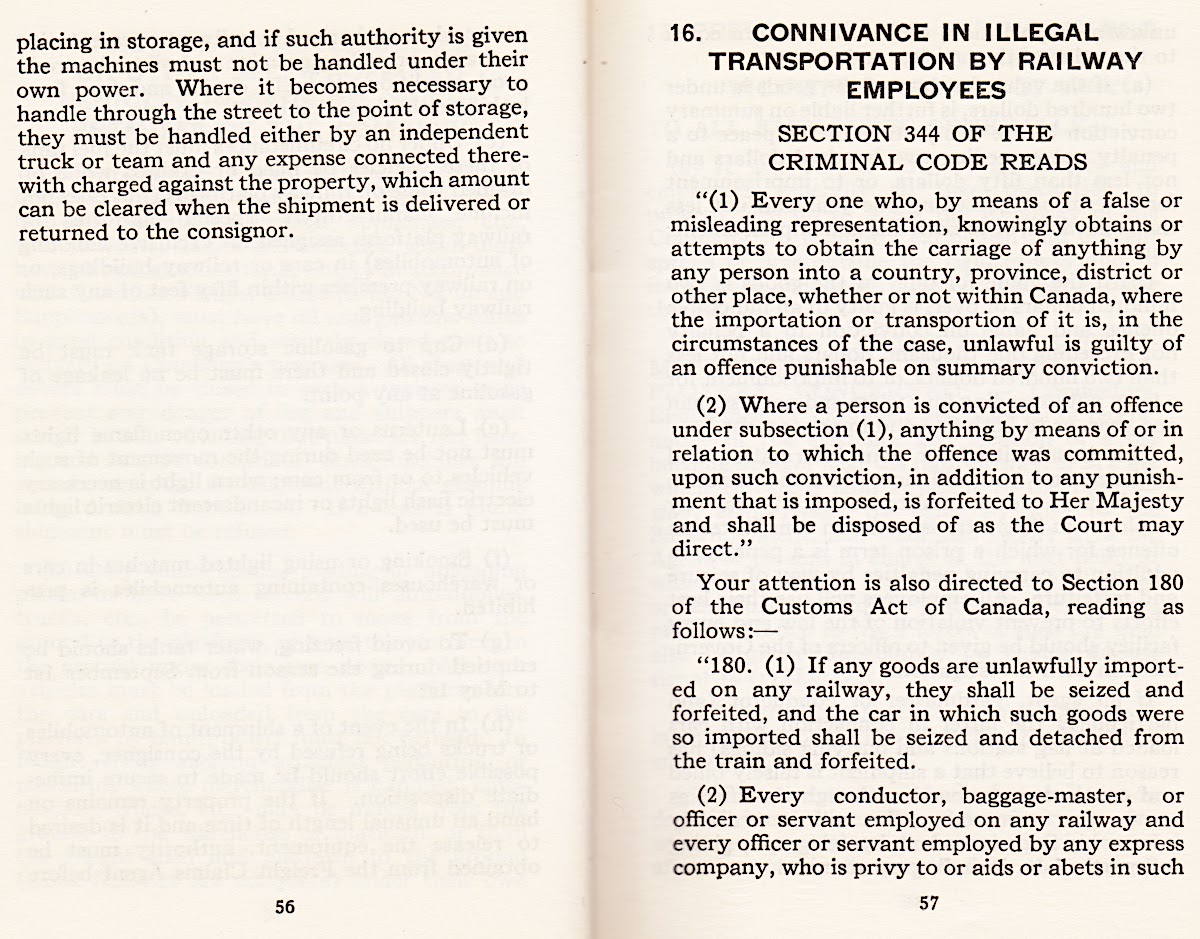" .. cover the spilled radioactive material with at least 4 inches of earth or sand, using a longhandled shovel ... "
... How long can I make the handle?
This booklet was supplemental to 'The Rulebook' and its instructions were to be followed with the same rigour and conscientiousness.
I was pleased to find that this 1958 version referred to all of the 'overlapping' technologies as Canadian railroading went through its great conversion from steam to diesel motive power. Self-propelled [passenger] cars are also covered ... the new Dayliners.
This week, a commenter to a recent American YouTube semi-trailer crossing-fouling collision complained that we probably have had 'enough of the bell' ... in the minutes of video following the actual collision. I knew the reason for this annoyance and you'll find it in Part 1.
... The lawyers who reviewed the booklet want someone to tell you to turn off the bell ... preferably a police officer. Then the Company has a witness who can testify that the rules were being followed and every precaution was being taken to prevent the accident.
... Furthermore, if you have the time and energy after a crossing accident, you should draw the attention of others to the ringing bell ...
BNSF: 'Thank you, Random Guy in the YouTube comments section!'
While the second half of the booklet isn't as oriented to moving trains as Part 1 is, there is plenty of effort put into writing the most airtight procedures possible.
To make things a little less boring, an effort has been made to season all these old procedures with illustrations from the period in which it was published.
Consider the hazard that fire presented to railways ...
... On one hand, they had wooden stations (way back then), a rich inventory of wooden shanties and shacks, and creosoted-wooden-everything-else in the form of track ties, piles of new ties, piles of old ties, and secondary-route bridges and trestles. They transported tank cars of gasoline for the post-war automobile boom and chemicals for the miracle of plastics boom. The countryside might be seasonally dry and hot, with wild grasses or forests just needing a combustion source.
... On the other hand, they had external combustion engines with coal or oil fires drawing air and venting it in pulses, and firemen shaking and raking these coal fires from time to time. The traditional supplementary light sources (signals, markers) on locomotives and cabooses burned kerosene as did the traditional lanterns train crew used at night to give movement commands and to inspect problems in the dark.
... Many of the wheel bearings were still packed with cotton waste and car oil ... and had the frustrating tendency to burst into flame. Steel brake shoes on many freight and passenger cars sometimes glowed red and produced cool-looking pinwheels of sparks against steel wheel treads - visibly dramatic at night.
... And 'everybody smoked'. Passengers at stations and on trains with opening windows might not realize that it was not helpful when they threw their mostly-extinguished cigarettes just anywhere.
Without the instructions in this booklet, it is probable that the whole railway would have burned down.
 |
| from: Saturday Night Magazine; January 1957. |
As the railways exited the 'coal age', society was well into the atomic age. Canadian uranium - probably generally shipped as lightly-radioactive ores - was being used to power Canadian nuclear reactors, American reactors and to supplement the eternal vigilance of America's nuclear-armed and atomic-powered armed forces. So four pages are devoted to rudimentary instructions on how to deal with radioactive shipments.
 |
| from: Canadian National Railways Magazine; October 1953. |
$100 in 1953 dollars = $1175 in 2025 dollars
 |
CPR official photo obtained by LC Gagnon in the early 1940s.
Eastbound in early 1977 at Schreiber ... a few stock cars of western Herefords were sometimes still seen martialled behind the power. |
 |
| from: Petroleum, Prehistoric to Petrochemicals; GA Purdy; 1957; Copp Clark, Toronto. |
 |
from: Canadian National Railways Magazine; November 1953.
(2025 - The Edmonton address is still a private residence.) |
End of Part 2.
CPR 1958 General Instructions Pertaining to the Movement of Trains, Engines & Cars, Part 1























